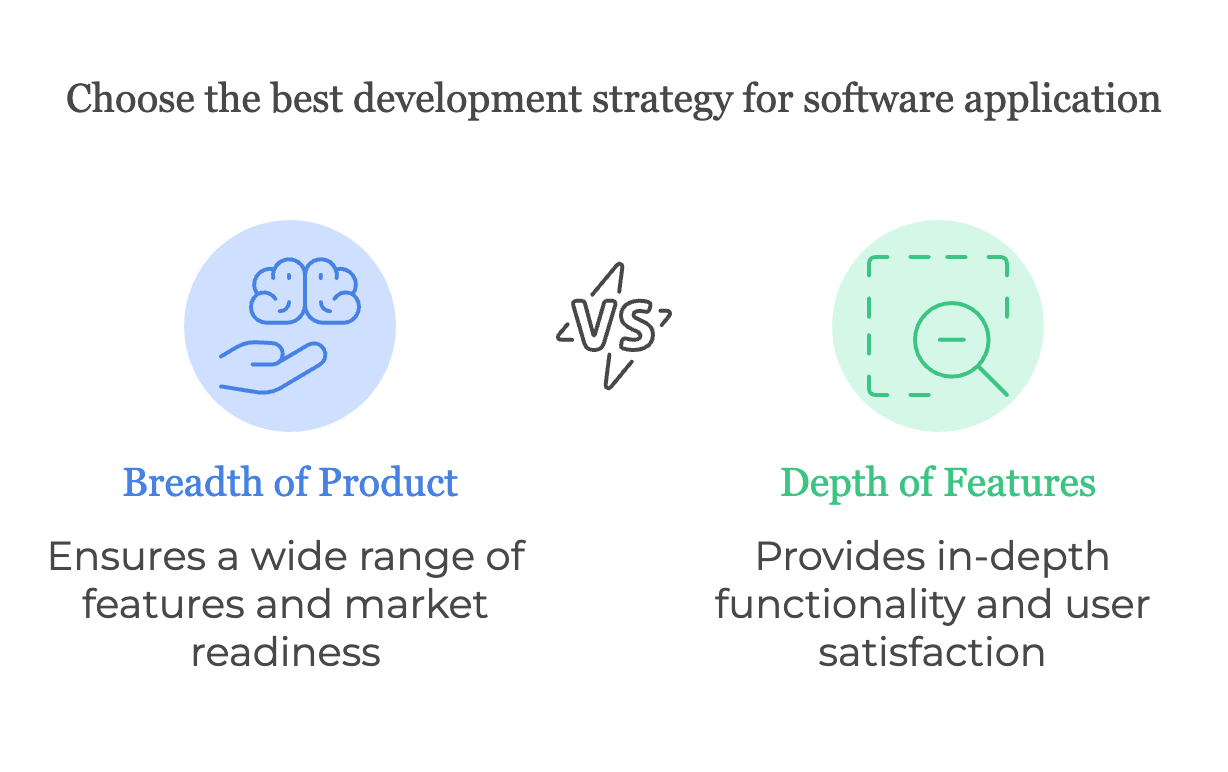Breadth or Depth first in Software Development
When developing a software application (a web application or a mobile application), the choice between breadth-first and depth-first approach can significantly impact the development process and outcomes.
The breadth-first approach is advantageous for quickly delivering a minimum viable product (MVP) that stakeholders can interact with, providing valuable feedback for further development. Whereas the depth-first approach is required and beneficial beneficial for ensuring that you are executing against a well provide application functionality or feature set. This approach ensures that the critical, complex features are fully developed and integrated, providing a high-quality, reliable application for a set of well defined matured use cases.

For example, if you are trying to build a case management system the following could be considered for these approaches:
Breadth-First Approach
For a Case Management Syste, a breadth-first approach might be more suitable if the goal is to quickly establish a wide range of basic functionalities of reviewing cases and dispositiong the cases. This can include:
-
User Interface and Experience: Quickly prototyping and implementing the user interface components to ensure a cohesive look and feel across the application. Leverage known UI/UX patterns that would help with the development rather than inventing or designing new interactions. This allows for early user feedback on the overall design and usability.
-
Basic Case Handling Features: Developing a broad set of basic features such as case creation, assignment, case disposition, and status tracking. This ensures that the application is functional and can be tested in real-world scenarios, even if each feature is not fully polished.
-
Integration with External Systems: Establishing basic integrations with external systems and services for signin and email notifications to ensure that the application can interact with other tools used by the organization. Do not focus on deep integration with features like calendar management and document management. Instead, allow the users to interact with these systems in a more manual way.
Depth-First Approach
Alternatively, a depth-first approach might be more appropriate if the focus is on developing complex, interdependent features that require thorough implementation and testing. Requires deep integration of features for multi-user workflows, tasks, and collaboration. This can include:
-
Complex Workflow Automation: Implementing intricate workflow automation features that require detailed logic and integration with various parts of the system. Each stage gate in the case workflow requires multiple inputs and result in tasks and followups for the users. This may require integrating with other dependent systems so that the users can work with a case. This ensures that each workflow is fully functional and robust before moving on to the next.
-
Advanced Security Features: Developing and thoroughly testing advanced security features, such as role-based access control and data encryption, to ensure that sensitive case data is protected. The complexity may increase if multiple users need to collaborate and work on a case at every workflow stage.
-
Detailed Reporting and Analytics: Building comprehensive reporting and analytics features that provide deep insights into case management processes. Complex system need to capture the user actions and the required data and metadata that are required for the reporting and analytics. Performance measurements and utilization need to be presented in dashboards. This allows for thorough testing and refinement of data processing and visualization components.
In summary, the choice between breadth-first and depth-first development for a case management system depends on the project’s specific goals and priorities. For case management or any other software application, look for a mature product in that space for inspiration and ideas. This kind of research and exploration helps you determine your development roadmap and whether to focus on breadth first or depth first approach.